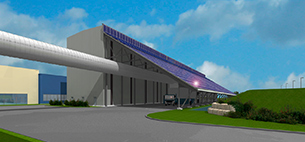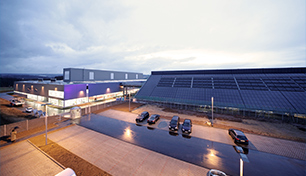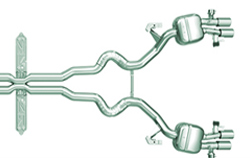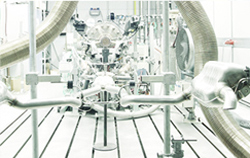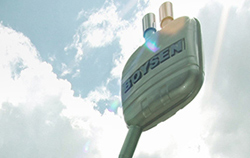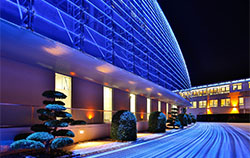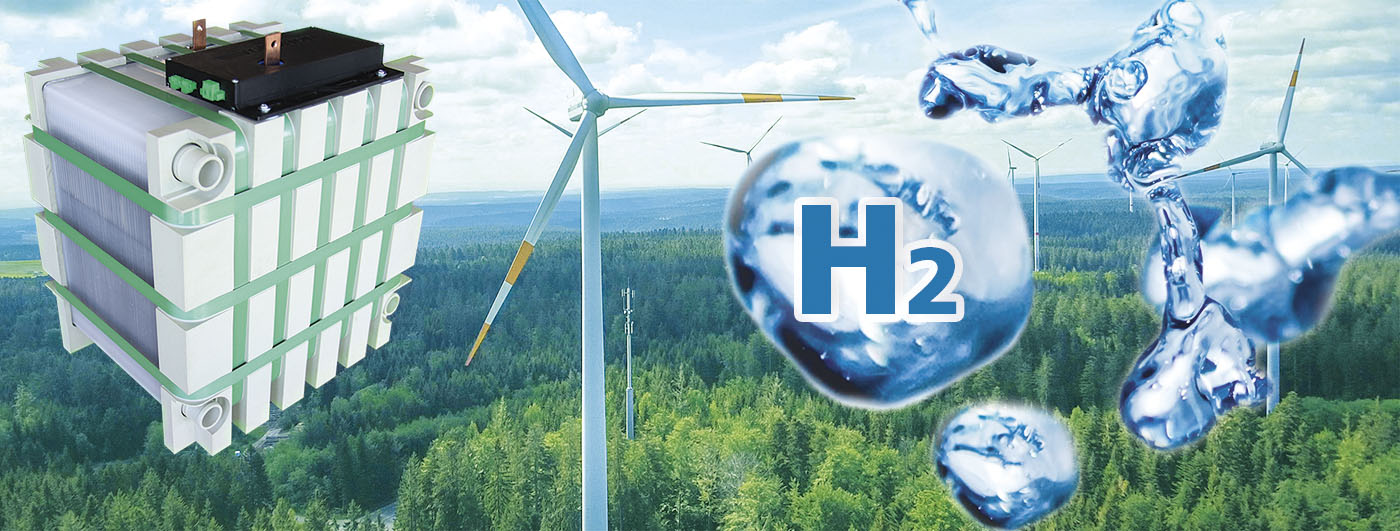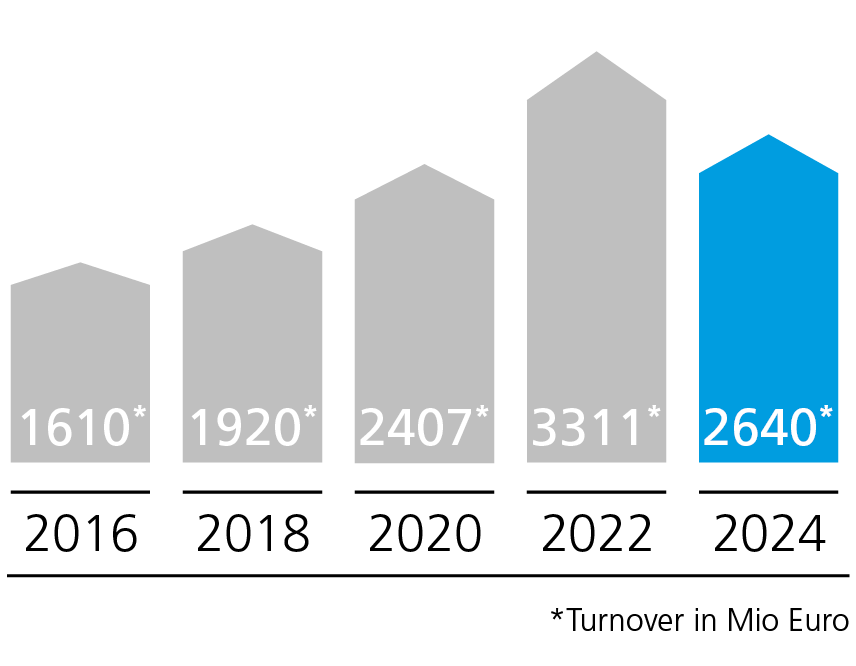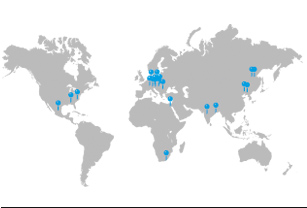Turmfeld plant:
The CO2-optimised factory
With the extension of its Turmfeld production plant in Altensteig in 2011, Boysen realised its vision of a CO2-optimised factory. The aim of the concept is for the factory to produce practically no carbon dioxide. Instead of traditional fuels, the energy for electrical power, heating and cooling is obtained from alternative sources. In Turmfeld these are primarily solar and geothermal energy.
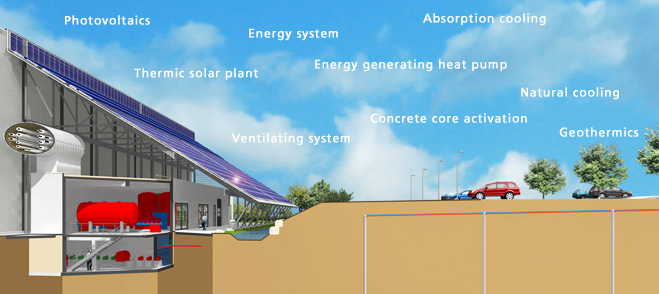
The most noticeable feature of the CO2-optimised factory is the photovoltaics plant. The "energy roof" has an area of 2,400 square metres. In actual fact, the 2618 modules make up a total area of 4845 square metres. The peak output of the plant is 654 kWp. The solar power is entirely fed into the public network. By contrast, the heat energy from solar radiation is used on site: to support the heating in winter and, with the aid of an absorption refrigeration unit, to cool the building in summer. The energy is obtained from a 384 square metre field made up of 128 solar collectors. In addition to solar, geothermal energy is also used. A total of 98 probes tap the geothermal energy at a depth of 130 metres. At the surface, the hot water is used either for heating or, via natural cooling, for cooling when required.
As well as the sun and the earth, the CO2-optimised factory also taps into a range of other small heat sources. The waste heat produced by the production machinery and compressed air generators is continuously recovered. The ventilation system and even the welding fume extraction system are fitted with highly efficient heat recovery units. For example, around 80 percent of the heat contained in the welding fumes is recovered.
To ensure the most efficient possible use of the available energy, all the concrete surfaces in the new building have been thermally activated. Concrete activation means that pipes are laid in the ground and either warm or cold water is fed through them depending on whether the room is to be heated or cooled.
According to calculations by the planning office responsible, the use of state of the art technology reduces the plant's CO2 emissions by 583 tons per year. The planning engineers rate the energy savings at an annual total of 5,840 megawatt hours. Heating energy accounts for the lion's share of this. The amount of savings - amounting to 5,100 megawatt hours - is the equivalent of 500 households. The plant saves 165 megawatt hours per year on cooling energy - the consumption of 100 households. The 575 megawatt hours of electrical energy saved corresponds to the annual consumption of 130 households.
